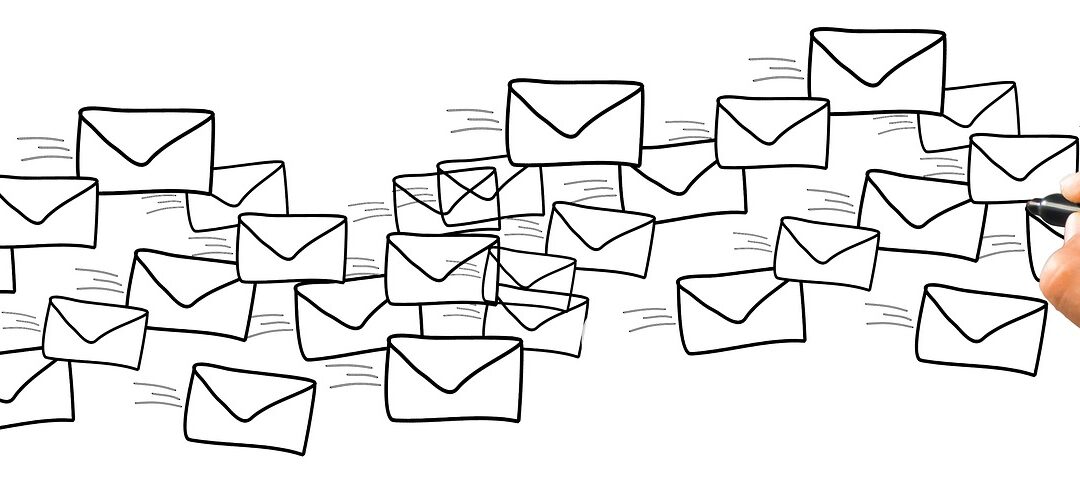Know the Fine Line Between Just-Right and Downright Annoying
Knowing what the right number of emails that you can send without annoying your list, or even worse, getting flagged as a spammer, is a difficult question to answer. There is no magic number. It really depends on so many different factors, like what you’re trying to accomplish and what your business is all about. Are you trying to increase online purchases? Increase appointments? Drive traffic to the website? Build loyalty? News publishers and bloggers might need to email their list daily while an insurance company or optometrist might choose to be more conservative by sending only 1 email per month.
As a rule of thumb, it was determined that on average, sending emails 2-3 times per month returned the best results for both B2B and B2C. Another study suggested 2-4 times per month was optimal.
However, people who subscribe to B2C email lists actually expect to receive offers and deals more often, so nearly 2/3 of B2C companies send emails 2-5x per month.
B2B companies, on the other hand, seem to be more respectful of their recipient’s time, so they email at least once per month, but no more often than 5x.
Other related questions to email frequency include what day of the week and even what hour of the day results in the most opens and clicks.
According to research gathered from ten different studies, the best days to send email are Tuesday, Wednesday, and Thursday, with Tuesday being #1. The best times to send email are, in order, 10:00 am, 8:00 pm, 2:00 pm, and 6:00 am.
Your emails should not come across as blaring advertisements. Instead, they should illustrate the value of your product or service and they should do so in a thoughtful and natural way. Your customers no longer want to be ‘sold’, they want to be educated by learning about how your product or service will fulfill a need that they have.
Interesting emails might include customer stories, testimonials, updates on the release of new products, or even happy birthday wishes that include a freebie or coupon.
Best practices suggest that you should set expectations at the moment your subscriber is signing up. Let them from the beginning how often they can expect to receive email from you.
One study revealed that 69% of the people polled stated that the #1 most common they unsubscribe from mailing lists is because the sender emails them too often. Before clicking the Send button for a bulk email message, be sure to ask yourself, “What value does my subscriber gain from receiving this message?”
A smart approach is to use list segmentation to make sure that you’re sending the right message to the right audience. A Customer Relationship Management (CRM) tool can be of tremendous help in tracking the specific interests of your customers and prospects for this purpose.
You might consider surveying your subscribers to discover what type of content they like to receive the most. After the results are in, you’d want to gradually increase your email frequency to not shock the system.
If your newsletter included dynamic content, then the included information could be tailored to the recipient’s interests. For example, a dynamic content monthly newsletter sent to all of a veterinarian’s customer base would only include information relevant to recipient’s interests based on whether they were cat owners, dog owners, neither, or both. It’s been reported that 91% of email list recipients have no issues with promotional emails, as long as they were highly targeted to their specific interests.
Marketing studies suggest that emailing weekly is more effective than emailing monthly. If you want to truly empower your email recipients then let them choose how often they hear from you and what type of content they are interested in by allowing them to select options from a subscription preference center.
A useful tip is for you to subscribe to the email lists of well-known influencers in your industry or your biggest competitor’s to see how often they are emailing. Monitor and track them. Do they send email, 1, 2, or as often as 3 times per week?
One recommended strategy to increase your open rates is to send the exact same email you sent earlier to everyone who didn’t open the last email, but change the Subject Line. By doing this you’re giving people a second chance to open it, who may have missed the first email you sent for any number of reasons.
Once you have discovered what frequency works best, you should commit to it and remain consistent.
In conclusion, the safest method to determine what your best email frequency rate is to know your audience, and carefully measure the results from increasing your frequency on a smaller segment of your list by monitoring for any changes in opens, clicks, and God forbid, unsubscribes. In time, possibly aided by a calendar, you will develop a natural rhythm and consistency for what works best for your customers.
It takes time to put all of the pieces of a successful digital marketing strategy in place and it takes time to see results. There’s no time like the present to get started.
Let’s engage.
Book a phone appointment now and let’s start a conversation about how to include Email Marketing in your Digital Marketing Strategy.

